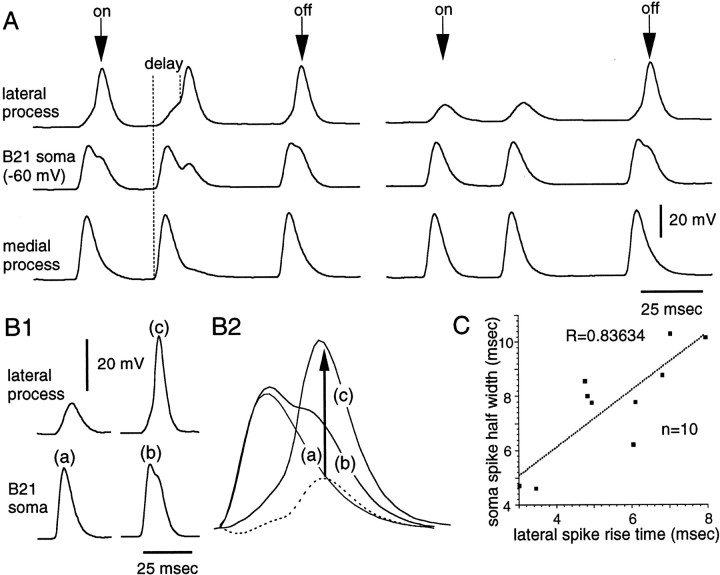Fig. 7.
Spike initiation in the lateral process affects somatic spikes. A, Experiment in which B21 was peripherally activated so that two spikes were triggered as the probe contacted the SRT (on arrow above top trace) and one spike was triggered as an “off” response (off arrow). Depolarizing current was injected into the soma so that in some cases, full-size spikes were triggered in the lateral process (e.g., both on and off responses on theleft), and in other cases spikes were attenuated (e.g., the on response on the right). When a full-size spike was recorded in the lateral process, the half-width of the spike in the soma increased (e.g., on the right, compare themiddle traces during the on response with themiddle trace during the off response). Note that there can be a delay before spikes are initiated in the lateral process, (i.e., when medial parts of B21 spike, the lateral process is depolarized almost immediately) (left, dotted lines). Thus, the rise time of the spike in the lateral process varies. B1, B2, Changes in somatic spikes appear to be caused by spike initiation in the lateral process.B1a–B1c, Somatic spikes were generated without a lateral spike (action potential labeled a) and with a lateral spike (action potential labeled b).B2a–B2c, Superimposition of a–c fromB1. Also plotted is the difference betweena and b, which is indicated by adotted line. Note that the peak obtained by the subtraction reached its maximum value after c did.C, Data from 10 preparations showing that the rise time of the spike in the lateral process and the soma spike half-width are correlated (r = 0.84).

